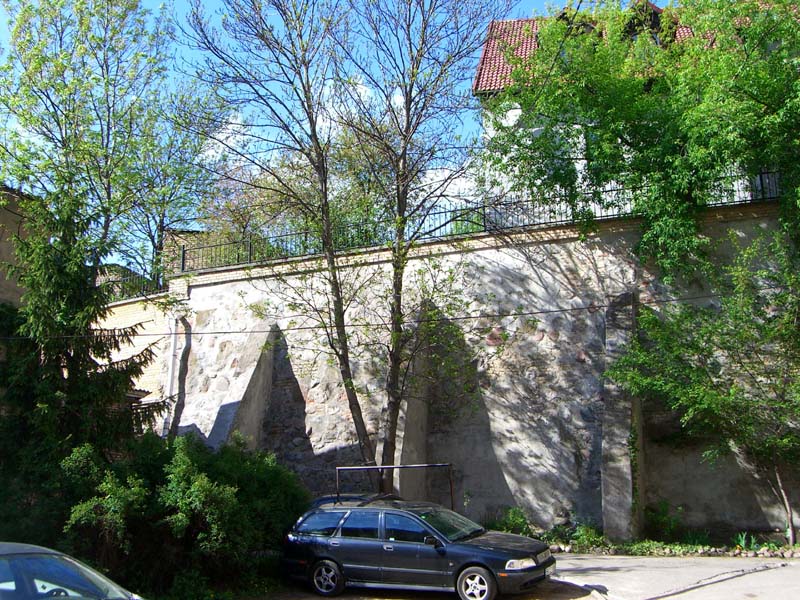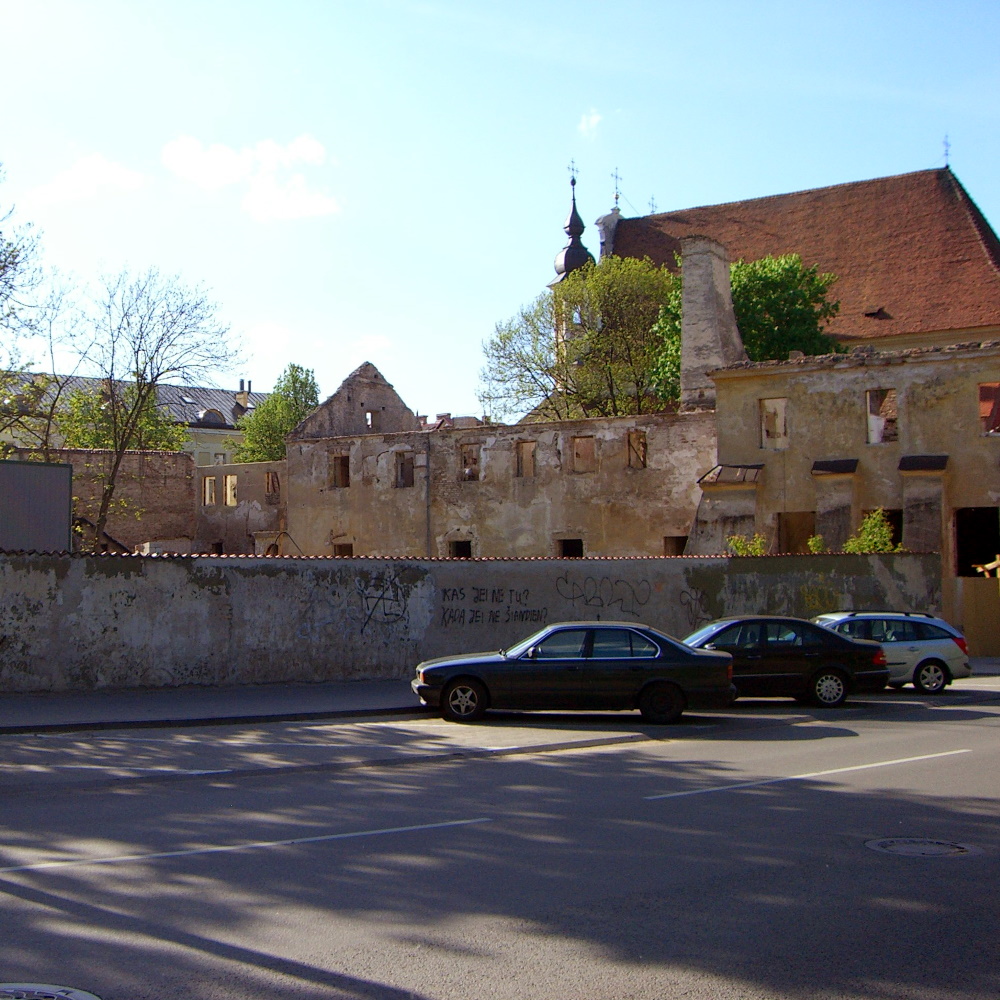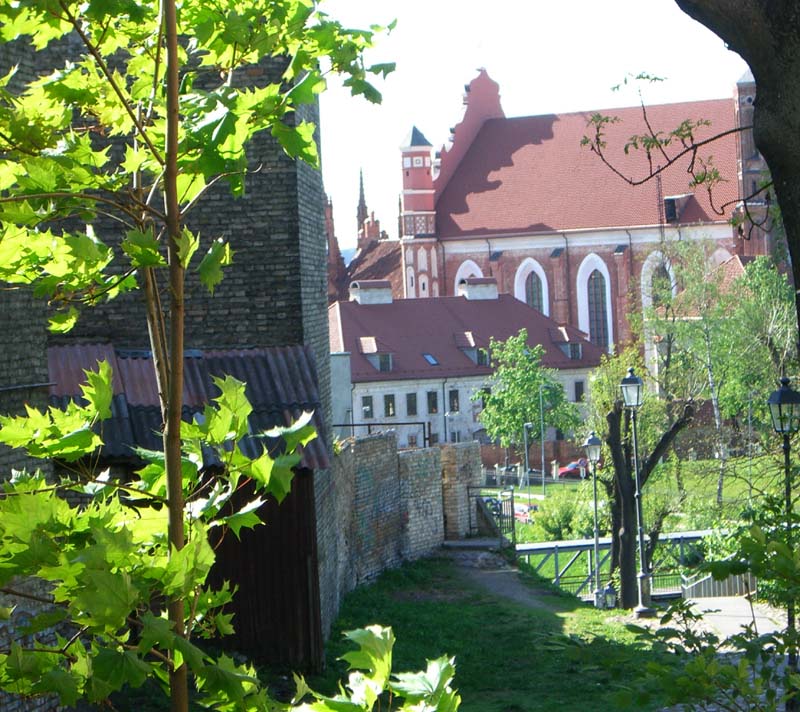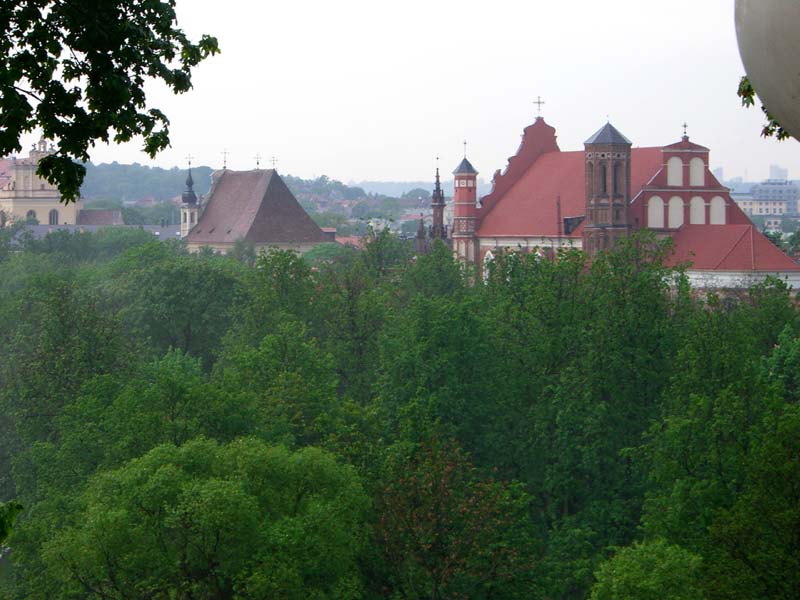Užupis, a neighborhood in Vilnius, Lithuania, May 2006
Užupis (prounounced OO-zhoo-pis) approximately means “a place behind the river”. It’s said to have a mystical appeal. It’s full of gothy-looking ruins and old buildings. As in most of the older parts of Vilnius, its architecture is irregular: there are houses built next to and on older houses; curvy, zigzaging courtyards that turn into alleys and disappear into cul-de-sacs; the whole feel of ice floes piled upon one another, which is what I love about Vilnius. But the Užupis buildings are older and have even more character than those in the rest of the city, and they are mixed with scenic vistas of tree-lined hills and Vilnia river.
A decaying building with empty holes for doors, where storage units and perhaps a garage used to be. The wide hole could have been a garage, or not. Detached buildings for garages and storage units were common in the Soviet era. Here are another image of similar units in Vilnius Old town, and here is another, with doors painted cheerful colors.

This and the next picture show what I call a “wall with wings”. I’ve seen it in Uzupis and in other parts of Vilnius Old Town. As you see, on top of the wall there is another house. I found a similar architectural oddity at a different location in Vilnius. I call that place a “two-level-courtyard”.


This is the view of the left side of same courtyard — you would see it if you were standing in the previous image and turned left. A few sheds of unknown purpose, adhering to a wall that has no windows, except four tiny window-like openings along the top. One can wonder what is the function of this building.

CIMG2746 This is the view of the left side of the courtyard from the previous image. You would see it if you were standing in the previous image and turned left. A few sheds of unknown purpose, adhering to a wall that has no windows, except four tiny window-like openings along the top. One can wonder what is the function of this building.
Užupis neighborhood in Vilnius, Lithuania, May 2006
Another house with tiny windows along the roof and a clothesline, but I’m pretty sure that’s a different courtyard in Užupis.

And here is an example of the nice, renovated area of Užupis (though I like the dilapidated parts better) — a church gate, with a part of the church visible in the background.

A decaying house on the other side of the street from St. Ann’s church. I took a picture of the same house last year, but back then it still had a roof. A year later it was roofless shell of the former structure.
I didn’t set out to track its fate year-by-year — it is only in retrospective that I noticed I took pictures of the same house in progressive stages of decay in two successive years. I don’t know what became of it eventually.

Bernardine monastery, adjacent to the St. Ann’s church, which dates from the late gothic era and is one of the best-known churches of Vilnius. Here is another view of the Bernardine monastery and St. Ann’s church.

The roofs of the Bernardine monastery and St. Ann’s church, seen in the distance from the terrace of the Tores cafe in Užupis (long defunct).

Mom and I at the Tores cafe in Užupis. The cafe is long gone. Faintly visible behind me are the roofs of the Bernardine monastery.

Me at the bottom of the stairs in Užupis. The house at the top of the hill looks suspiciously two-dimensional, like a cardboard cutout.
